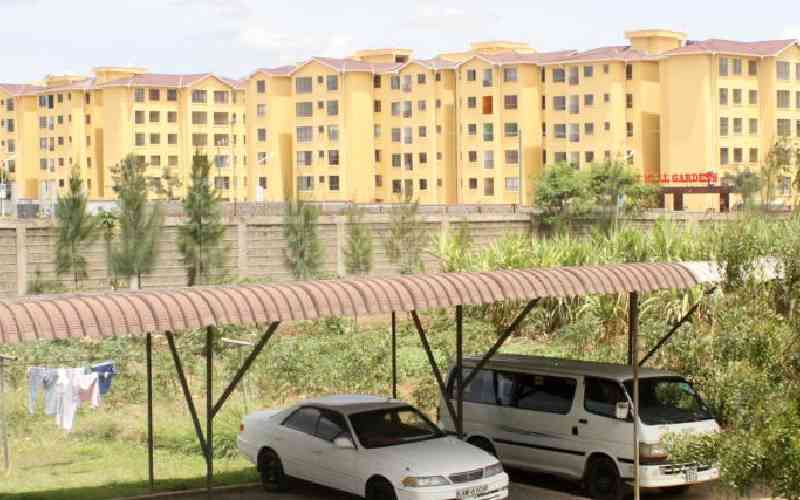In a small corner of State House Avenue lies what is perhaps Kenya’s oldest nursery School, Lady Northey, founded in 1919 and named after the then Governor’s wife. It was meant to be a day-care centre for white children whose mothers were government employees.
Back then, Nairobi had few permanent structures. Majority were made of timber. Yet, some of the few stone buildings that came up then — including the 100 year-old Lady Northey — are among the most enduring structures in Nairobi as a walk along present day Kenyatta Avenue proves.
Through coincidence or design, Lady Northey was chosen by the county government as the centre where structure owners as well as professionals in the built environment are required to regularise unauthorised developments. The exercise has been running for the last one month.
The regularisation process follows last year’s enactment of Nairobi City County Regularisation of Developments Act.
The Act seeks to bring unauthorised developments under the formal planning framework in order for the county government to provide basic facilities and proper infrastructure.
According to the Act, an unauthorised development is one that has not received the necessary approvals from either under the National Physical Planning Act or relevant county departments regardless of whether it lies on allotted county government or private land.
Low uptake
Included are developments erected without proper change of use for the property and irregular subdivisions.
But despite the county government’s efforts to woo people to regularise their structures, not many had taken up the offer whose deadline was September 15.
When we visited Lady Northey last week, we found a skeleton team that seemed to have little to do. There was no single client here — at least during our visit. In addition, we could not establish how many affected Nairobians have regularised their developments as most of the county officials we called were said to be holding a meeting in Mombasa.
“The initial uptake has been low,” said an official who did not want to be named as he is not authorized to speak on behalf of the county government. “Have you seen anyone coming for the exercise since you arrived?”
According to the county’s Lands and Physical Planning executive Christopher Khaemba, not many people in Nairobi understood what the regularisation exercise was all about.
Lack of awareness
“We had to mobilise our teams to the sub-counties in order to sensitise the people on what we were doing. We were interested in land buying companies, private developers and private home owners. Things started moving in the right direction after the sensitisation process,” says Khaemba.
According to Khaemba, it has been difficult for the county to provide certain social amenities to large segments of the city owing to the irregularities in the developments.
Stay informed. Subscribe to our newsletter
A case in point is that of Nyayo Estate in Embakasi where providing adequate water supply has been hampered by structures constructed on way leaves.
The matter here was complicated by the long standing dispute in Tassia II infrastructure project pitting the National Social Security Fund on one hand and tenants on the other.
The water line to Nyayo Embakasi, according to Khaemba passes through Tassia II. No progress could be made in the water supply as long as the dispute in Tassia II was still raging.
Water woes
“Nyayo Embakasi is an estate with more than 5,000 families. Their water supply line passes through Tassia, which has had its fair share of gridlocks. The water leeway was invaded by illegal structure owners. Rerouting the line would have been more expensive. We are only going to regularise structures as recommended by NSSF so as to pave way for proper water connection to the affected residents. Any other structure on the way leave will have to go,” says Khaemba.
But as much as the county government aims to regularise such developments, this exercise, Khaemba says, is also geared toward weeding out poorly constructed buildings.
This follows recent cases where buildings have collapsed especially in Nairobi’s Eastlands.
Previous media reports have indicated that close to 50,000 structures in the city should be demolished for failing to meet structural requirements hence a danger to tenants. But the problem of poorly constructed structures is much bigger.
“When it comes to poor quality structures, most of us only think in terms of residential flats especially in Eastlands. True, these may have grabbed the attention of the public since they impact on people’s lives directly. However, there are many commercial structures that are unfit for occupation. An unfit building cannot be regularised. It will have to go,” says Khaemba.
In a previous press briefing, county officials indicated that 3,000 buildings had been audited with 384 of them having visible defects with a recommendation to demolish them.
In May 2016, the county assembly approved a report by the County Planning and Housing Committee that recommended the demolition of a five-storey building along Mbagathi Road-Langata Road roundabout on grounds that it was constructed on riparian land.
—[email protected]
 The Standard Group Plc is a
multi-media organization with investments in media platforms spanning newspaper
print operations, television, radio broadcasting, digital and online services. The
Standard Group is recognized as a leading multi-media house in Kenya with a key
influence in matters of national and international interest.
The Standard Group Plc is a
multi-media organization with investments in media platforms spanning newspaper
print operations, television, radio broadcasting, digital and online services. The
Standard Group is recognized as a leading multi-media house in Kenya with a key
influence in matters of national and international interest.
 The Standard Group Plc is a
multi-media organization with investments in media platforms spanning newspaper
print operations, television, radio broadcasting, digital and online services. The
Standard Group is recognized as a leading multi-media house in Kenya with a key
influence in matters of national and international interest.
The Standard Group Plc is a
multi-media organization with investments in media platforms spanning newspaper
print operations, television, radio broadcasting, digital and online services. The
Standard Group is recognized as a leading multi-media house in Kenya with a key
influence in matters of national and international interest.








